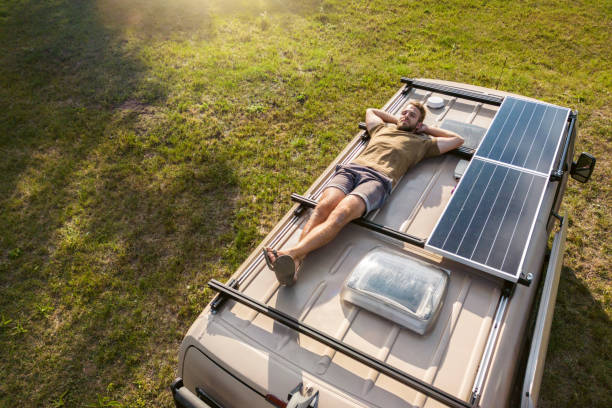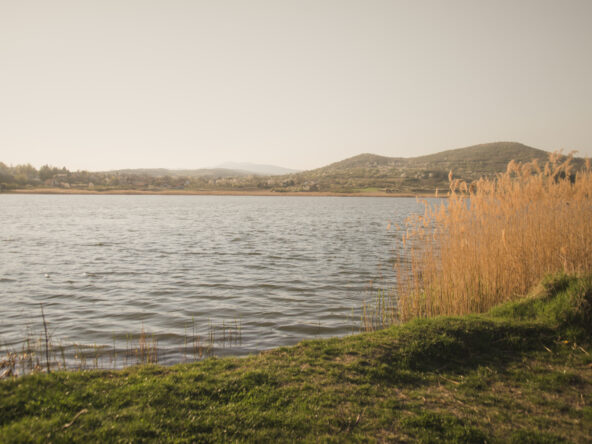Daydreaming about living the carefree RV life, boondocking off-grid in all the primo nature spots, and saying see ya later to the daily grind? Making that dream a reality is madly easy these days, thanks to some righteous modern tech. Let me break it all down for you on going completely self-sufficient in a decked-out RV—from the gear you need to power systems to choice camps. This ain’t your grandpa’s campervan lifestyle. Read up and then make like a tree to start your epic adventure!
Optimal Wheels for Off-Grid Adventuring
Obviously, the first thing you need is a badass RV rig customized for off-grid boondocking flexibility fueled by the sun where nightly rental spots can cost a chunk of change. This means…drumroll…downsizing to a minimalist ninja level with your stuff! Gotta keep items capped since even the roomiest motorhomes have limited storage space compared to apartments back in the gridlocked matrix you’re exiting.
Be ruthless about what you really need on a day-to-day basis, livin’ off-grid. And if you score some sweet hidden storage spots under the bed or seats to organize non-essentials, that’s just groovy gravy. Since you’ll likely be posted up far from the modern world for long spells before making supply runs, conserving water and having backup food are crucial too. Multi-purpose items pull double duty. Pack light to stay tight!
So many choices out there when selecting your ideal escapin’ machine depending on your travel squad size and budget. Let’s break down some top contenders:
Class C Motorhomes: For 1-4 folks built on a van frame—easy to drive and park but still spacious with good MPGs for long hauls to your kickback destinations boondocking bliss. Deck it out with solar!
Travel Trailers: Available in rad sizes from micro tear drops to spacious fifth wheels. Bump it with any tow vehicle rockin’ a trailer hitch. Light models can be pulled by most SUVs or trucks. Go bigger with a fifth wheel for luxury living but you need a gangsta pickup to handle it.
Truck Campers: Slide-in truck bed campers are nimble AF but have tighter quarters for full-time homesteading. However, some models allow cab access for storage nooks. Great for shorter trips if you cruise a lot.
Key things to scout for whichever model platform speaks to you: built-in solar hookups to tap that free, unlimited battery charger blazing in the sky! Look for pre-wiring which makes adding panels, controllers and other gadgets much simpler. And don’t forget sufficient fresh water storage so you ain’t parched between fill-ups. I’ll dive deeper into critical systems in a minute!
Epic Solar Power Setup: Your Off-Grid Lifeline
Let’s get you rolling in renewable energy first. The core components for scoring solar-powered freedom in your RV include:
Solar Panels – 400W to 1000W is common depending on your usage for lights, fridge, laptop, phone charging and other basics. Flush mount 100W panels to the roof are standard installs. More watts means more off-grid days before needing a backup generator.
Charge Controller – This rad gadget channels energy from the sun to properly charge batteries safely so they don’t fry. Don’t leave home without one!
Inverter – Converts DC current from batteries into the classic wall outlet alternating AC current to power devices and appliances.
Batteries – 200-500 amp hour AGM, gel or lithium batteries store all the sunshine juice collected during daytime travels. Lithium batteries are priciest but last longer than lead acid.
Size your solar system based on your normal appliance and device usage so you’re not under or overdoing it. Too little solar and battery capacity and you’ll drain fast. Too much system overkill is $$$ wasted. Do you really NEED to run an Instant Pot or just stick to heating up canned soup? Monitor your power habits and right-size accordingly.
And for backup when sunlight or battery stores run low, pack a portable gas generator like Honda Eu2000i. They purr quietly for a gas unit and efficiently recharges batteries in a pinch after multiple cloudy days. Just don’t rely on it heavily. The goal off-grid is soaking up SOLAR baby!
Water Conservation: Every Drop Matters!
‘Kay, so power covered. Now let’s chat about a gravity essential – water! Most RVs have dual tanks – fresh water storage and grey water waste. Fresh tank sizes vary widely from 30-100+ gallons. Calculate your personal usage closely, know your exact tank volume and track consumption hourly. Larger families burn through way quicker obviously.
Be smart conserve H20 when off-grid by:
- Navy showers – on/off between soaping up cycles.
- Sponge baths or wet wipe downs conserve even more!
- Brush teeth and wash dishes filling a cup not leaving sink running.
- Reusing grey water from sinks/shower to hand water plants.
- Fix leaks IMMEDIATELY. A small drip becomes gallons wasted over days.
Empty grey tanks early and often even if not full yet to keep fresh as much reserve as possible boondocking. Dump at stations along the route. For black water waste, replace with portable or composting toilet setups instead of onboard tanks to avoid needing dumps.
And top up fresh tanks every chance ya get! Tap potable water stations at private and state campgrounds. Use a special hose filter to fill straight from lakes and streams then purify. Worst case, reserve the entire truck bed just for hauling water jugs and supplies for extended durations way out yonder off-grid. Think like a desert warrior!
Heating, Cooling and Other Power Hogs Off the Grid
Here’s the reality about electronics that suck serious juice fast when you don’t have hookups…they drain your battery bank QUICK. Like motors (fridge), AC units (roof), pumps, heaters or hair dryers for example. While solar panels and charge controllers efficiently capture and store daytime energy, heavy loads zap it right up without sunlight to replenish.
So what’s an off-gridder to do? Strategize your power needs smartly. Stick to warm, breathable layers and clothing appropriate for the current climate over cranking a loud RV heater or AC continually. Crack windows and skylights for fresh air circulation. Use fans to feel cooler without the energy drain. And limit use of any high drain devices to daylight hours when solar panels actively refuel batteries. Does it need to be on right now? The less you hastily drain batteries overnight, the longer your reserves will last.
Of course composting toilets eliminate drainage pumps altogether. And upgrading to a 12 volt DC compressor fridge means no inverter juice required either. But you’ll still need an inverter to charge phones and laptops without special solar ports. So watch those unnecessary drains if trying to maximize off-grid time. Be intentional about consumption.
Earning $$$ to Fund Your RV Freedom
I feel ya, extended travel and RV living can sap up a bankroll quickly – gas, food, solar gear, brewskis! So what can you do to fatten wallet while on the move? Tons I tell ya! Digital nomads have more mobile money making potential than ever thanks to expansion of remote work options and online side hustles. And you can pick up odd jobs for cash wherever the road takes you if needed.
Some great income streams to fund your forever trip:
Freelance gigs: writing, graphic design, bookkeeping, virtual assisting, computer help—open for business on the world wide web!
Online Biz: Affiliate marketing, drop-shipping goods, selling eBooks, coaching consults, YouTube ad revenue if you get big Monetize a travel blog!
Seasonal Work: Amazon camper gigs, and tourism/recreation resorts always need help during busy summer and winter seasons. Work at campgrounds for free stays!
Don’t need as much income if you learn how to curb expenses and trim costs down by being resourceful about free public land stays, cooking meals instead of restaurants, and scoring discounts. Bartering goods and services saves money too. Where you lack cash, maybe you have skills or talents to offer locals. Get creative!
Smart Boondocking: Where to Camp Free Off-Grid
Okay finally, THE hot topic for RVing off-grid self-sufficiently….where the heck can you actually STAY?? Tons of options across our vast public lands, people! It just takes some research.
National Forests – Most allow free dispersed camping 14 days then you gotta roll to a new location at least 50 miles away in that forest. States also have parks/rec areas with free zones. Call each district to confirm policies.
BLM Land – Tons of Bureau of Land Management regions across the west and southwest with stunning landscapes. Use the Campendium app to map camp locations reviewed by fellow drifters noting details like monthly temps, cell signals, road accessibility and precise GPS coords of awesome spots. Read up on rules to follow for respectful stewardship.
So wherever wanderlust moves ya, living comfortably off-grid full-time is oh so doable these days with the right RV. Gear up with efficient solar power, conserve water wisely, earn an income flow on wheels, and find plenty of public lands allowing 2 week rotations boondocking for $0 dollars!




